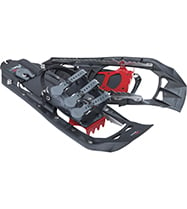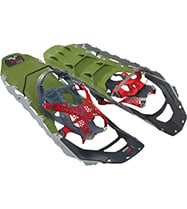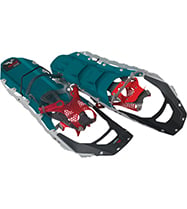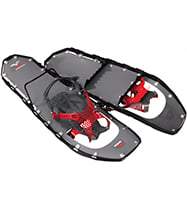10 Amazing Places to Snowshoe in North America
Your favorite hiking trails may be under snow until spring, but snowshoeing is an affordable, accessible way to keep winter fun. The solitude of snowshoeing is also a bonus: there are no crowds, heavy machinery, or endless lift lines. The following destinations are some of the best places to snowshoe in North America, from groomed Nordic tracks and valley floors, to lakeshore forest glades and rugged ascents.
10 Best Places to Snowshoe in North America
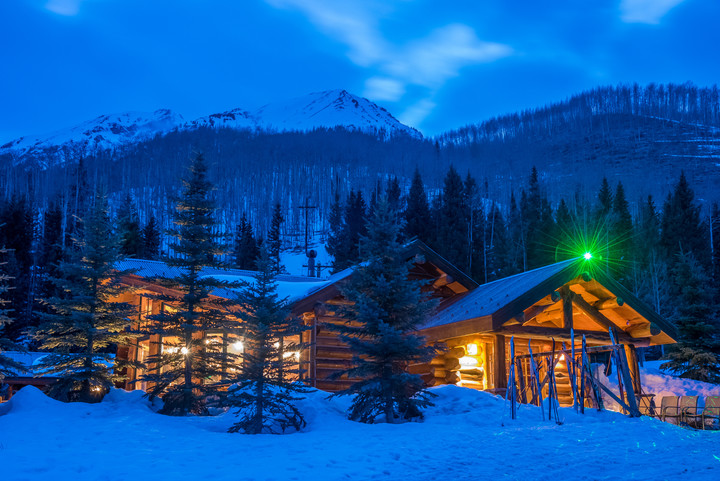
1. Ashcroft, Colorado: Ghost town turned dining destination
Eleven miles from Aspen, this ghost town has been turned into an ungroomed, unmaintained Nordic playground. Explore the miles of trails that traverse meadows, creeks and evergreen forest dotted with the remnants of the mining boom town of Ashcroft. Your destination should be the famed Pine Creek Cookhouse, which serves hearty alpine fare with regionally sourced ingredients. Pop in for a toddy or make a reservation for lunch or dinner. If you’re too tired or tipsy to hoof it back to your car, you can book a sleigh ride. Lessons and tours hosted by ACES (the Aspen Center for Environmental Studies) are also available.
Tip: You’ll need to purchase a day pass on-site. Gear is also available to rent.
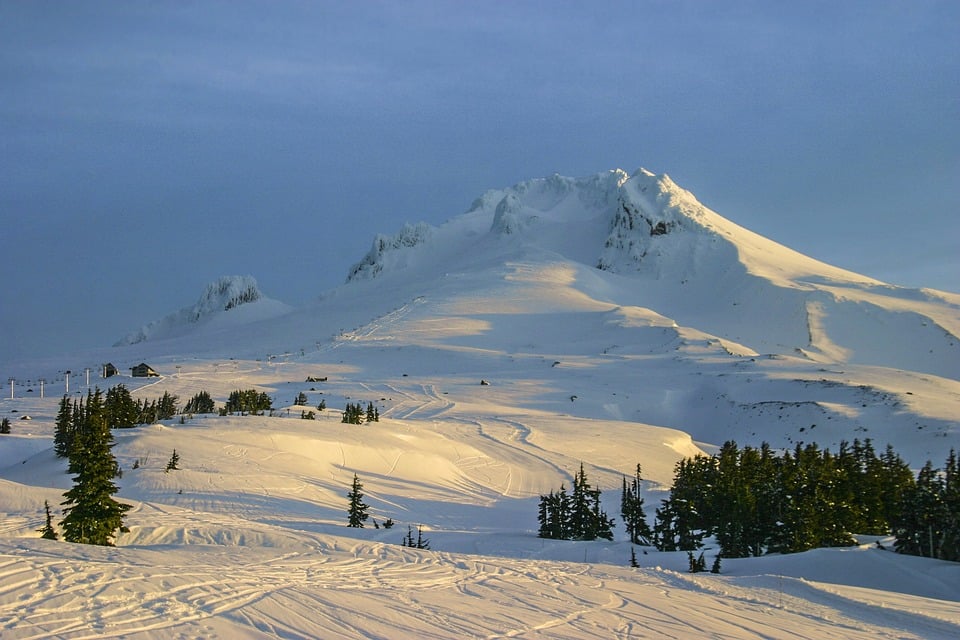
2. Mt. Hood, Oregon: Lush alpine landscape and cozy lodging
This breathtaking alpine escape is just two hours from Portland and 45 minutes from the epic outdoor town of Hood River. As you head up into the Hood River Valley, the volcanic cone of Mt. Hood towers above dense pine forest and meadow. The five-mile Trillium Lake Loop is easy, but the views are just reward. For some serious backcountry burn, try Crater Rock or Illumination Saddle, which are above treeline, or tackle a punishing 12-mile loop that ends at the historic Cloud Cap Inn. You can also book a snowshoe tour with Mt. Hood Outfitters. If you’re not staying on-site, end your day with a pint at Mt. Hood Brewing Co. in nearby Government Camp or bunk in Hood River, with accommodations ranging from hostels and farm stays to cabins, luxury and rustic lodges and historic inns.
Tip: Poles and Televator heel risers are invaluable for long snowshoe ascents.
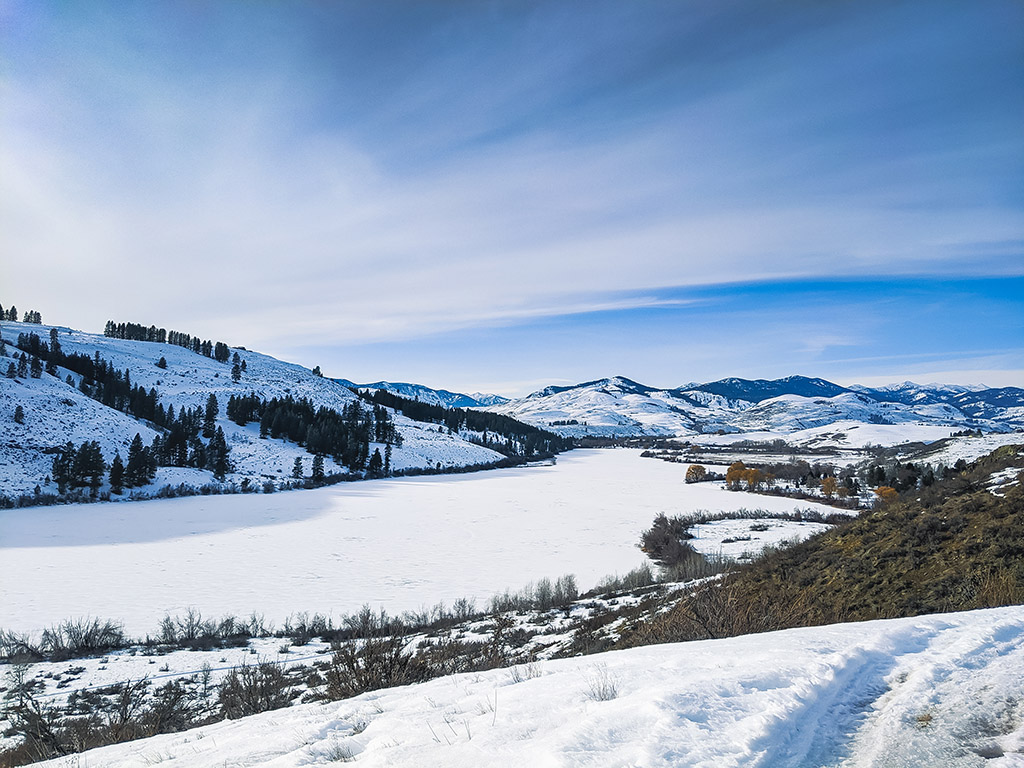
3. Methow Valley, Washington: An epic trail system in the North Cascades
The enchanting little Western town of Winthrop is four-and-a-half hours northeast of Seattle and a wonderful winter getaway in its own right. It’s also the gateway to what many know simply as “The Methow” (pronounced Meh-towl)—a stunning, 60-mile-long glacial valley in the Okanogan National Forest. It’s home to the nation’s largest Nordic ski area and a lineage of XC Olympic athletes to reinforce the point. Distinct systems can be found in Winthrop, Sun Mountain Lodge, Mazama and the Rendezvous trails—all within a short drive—featuring lake, mountain and meadow terrain for every skill level. A $5/day snowshoe pass or any already purchased ski pass is required to access the 120 miles of trails expertly maintained by the non-profit Methow Trails.
Tip: Stay in one of the region’s quirky lodging options, like a renovated retro motel or the unique “Rolling Huts.”
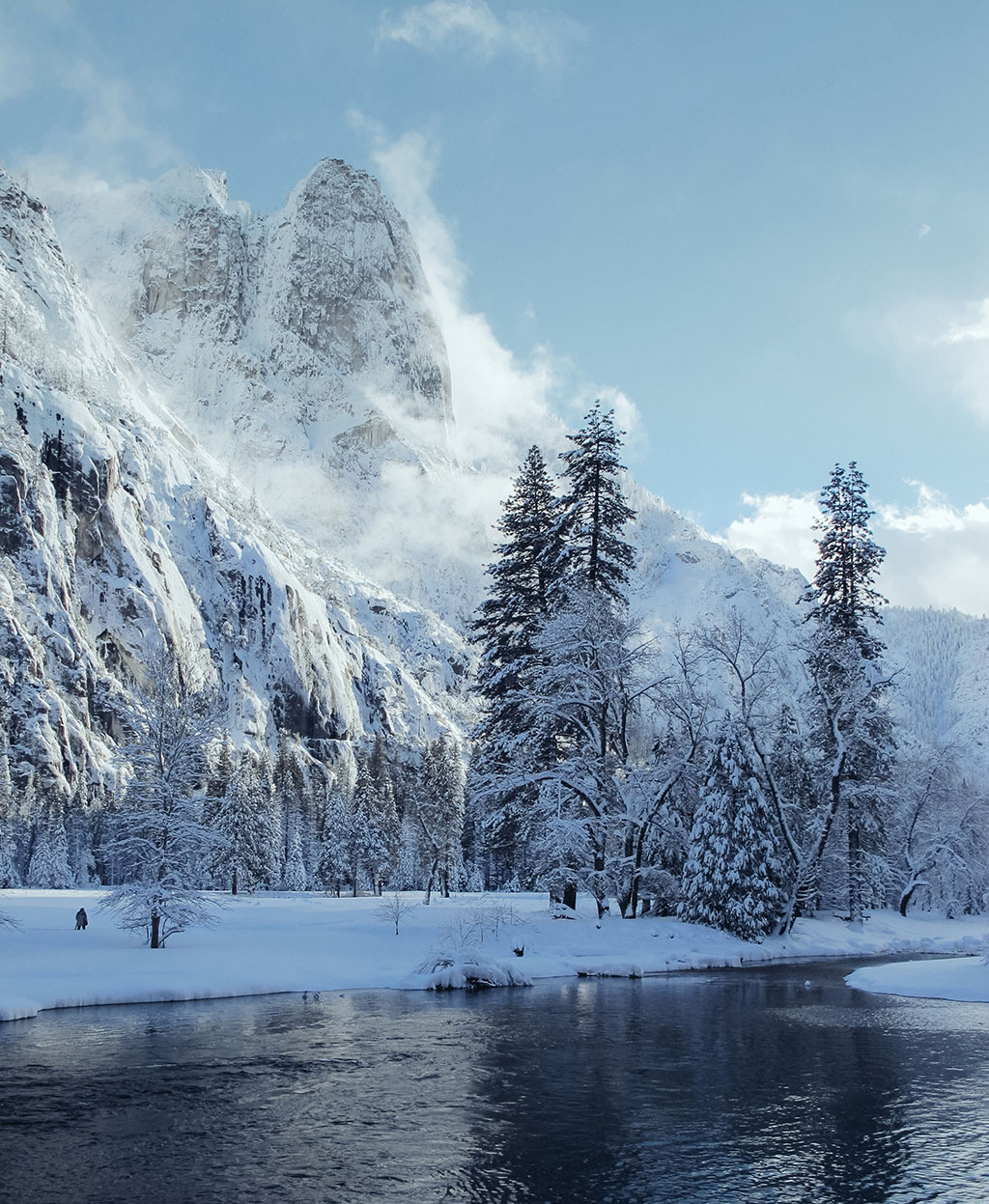
4. Yosemite National Park, California: No crowds and iconic rock faces
Free of the summer traffic jams, Yosemite becomes a different place entirely. The Valley is accessible by car year-round (check the park website on seasonal road closures) and there are diverse trails for all levels. There’s the 21-mile out-and-back Glacier Valley Trail, a groomed path that leads to an overnight hut, but there’s also plentiful winter camping within the park. One of the most popular routes is the 7-mile round trip to Dewey Point, which passes through meadow and conifer forest to yield staggering views of El Capitan, Half Dome, Mt. Hoffman, and Mt. Conness. The park service also offers guided naturalist snowshoe tours to Dewey Point, as well as full moon tours.
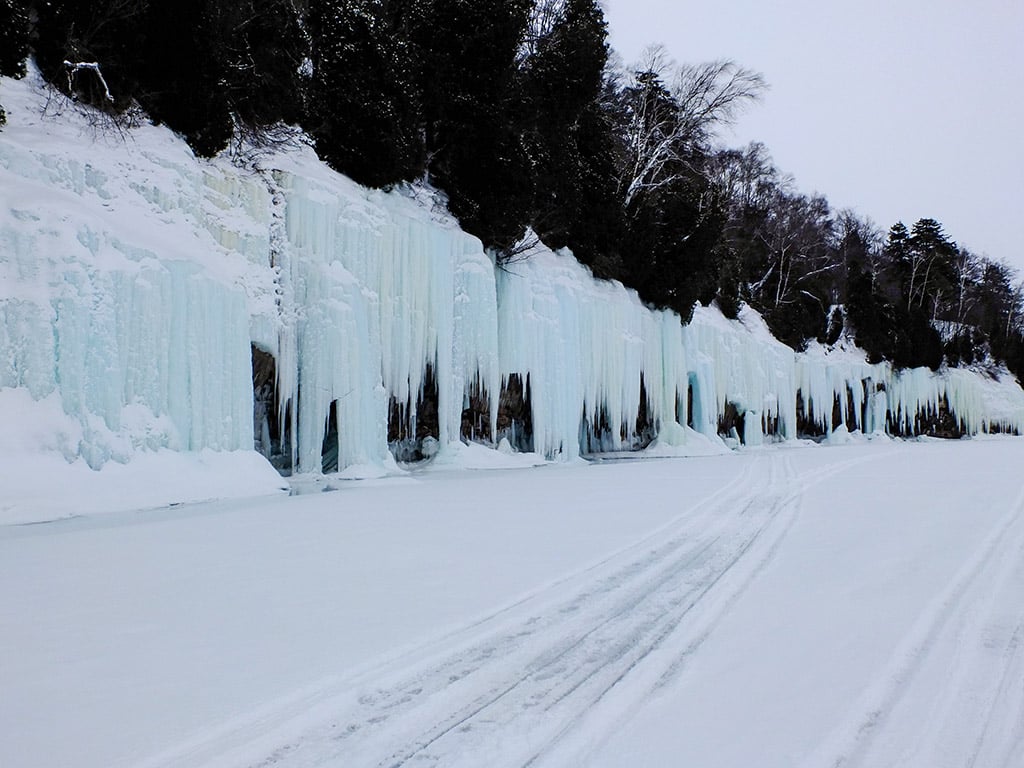
5. Canoe Country, BWCA, Minnesota: Native American culture, backcountry camping and the Aurora Borealis
The region known as “Canoe Country” sits on the northeastern tip of Minnesota, adjacent to the Canadian border (neighboring Quetico Provincial Park of Ontario is also included). The Boundary Waters Canoe Area Wilderness (BWCA) lies within Canoe Country and while there are many established resorts catering to Nordic sports, dogsledding and ice fishing, the region is also a haven for backcountry enthusiasts. With over two million acres of international lakes, waterways and hiking trails, snowshoers can revel in trekking through rugged, off-grid wilderness or beneath startlingly clear night skies with prime Northern Lights viewing. The region is also steeped in its indigenous culture: you can visit spots like the Chik Wauk Museum and Nature Center to learn more about the native Objibwe people, while the BWCA has pictographs and wooden, Objiwa-style snowshoe rentals. The Forest Service permits dispersed winter camping in the Superior National Forest, while the BWCA requires you to fill out a permit free of charge. You can set up camp in a designated or backcountry site, try “hot tent camping” (safari-style tents with a wood stove) or build a snow cave. Popular snowshoeing options include guided tours, lake-to-lake routes, and portage trails through the forest.
Tip: The Minnesota portion of the BWCA resides within Cook County and is home to the region’s Nordic-centric resorts, which include Lutsen, Grand Marais and Gunflint. Some resorts, like Golden Eagle Lodge and Cabins in Grand Marais, are “silent sports only” properties with marked trails or BWCA access).
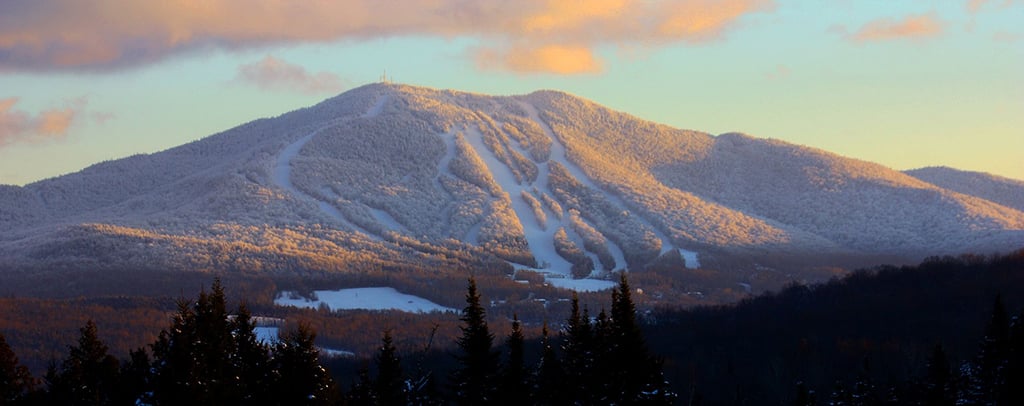
6. East Burke, Vermont: Cozy lodging, artisan cheese and an extensive backcountry trail system
Located in the Northeast Kingdom, just 34 miles from the Quebec border, adorable East Burke is the quintessential small Vermont town. Make a weekend of it by renting a cabin or staying at a historic farm and animal sanctuary; refuel with the local-centric food and drink the area is known for. The region’s reputation as a downhill and Nordic epicenter is the result of Burke Mountain Academy’s record for turning out Olympians—it’s America’s top ski racing school. Snowshoeing, however, is also a favorite pastime, thanks to over 37 miles of groomed track at Kingdom Trails Nordic Center and backcountry trails for all skill levels. The Kingdom Trail also features long tracks—40 to 50 miles—connecting with other trail systems and towns. From intense uphill to forest glade and meadow, you’re sure to find your own little slice of paradise.
Tip: Don’t miss out on tasting some of the state’s justly renowned artisan cheeses (maybe in a fondue?). If you’re driving, make sure to hit some stops along the Vermont Cheese Trail.
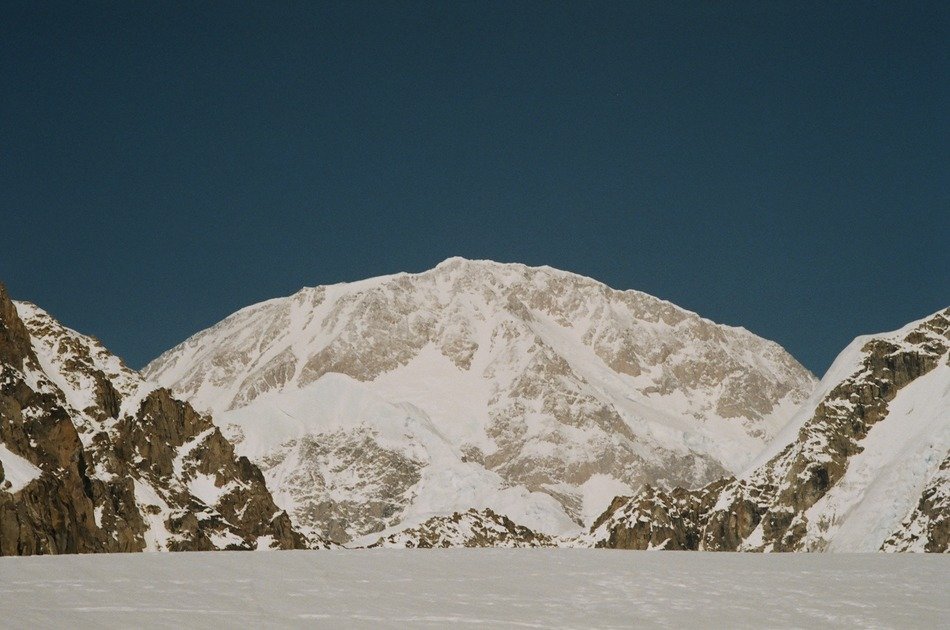
7. Denali National Park, Alaska: Northern Lights, groomed trails and dog-sledding
Even novice snowshoers and kids can experience Denali in winter, thanks to the abundance of groomed, marked Nordic trails catering to all abilities (Talkeetna, 84 miles away, also has groomed Nordic track). Families can also go dogsledding and visit the Murie Science and Learning Center, which doubles as the Park’s winter visitor center, which has an indoor picnic area/warming hut next door. It’s recommended you plan a snowshoe at dusk, aka the “golden hour”, or catch the Aurora Borealis, which can be seen from October through March (prime hours are 10 pm to 2 am); ask a ranger for trails with the best views. Mountain Vista is another popular area with miles of trails, including some along the Savage River and views of Mt. McKinley.
Tip: Don’t attempt backcountry snowsports in Denali unless you’re experienced, due to avalanche and climate hazards. Nighttime temps can dip to -40 F.
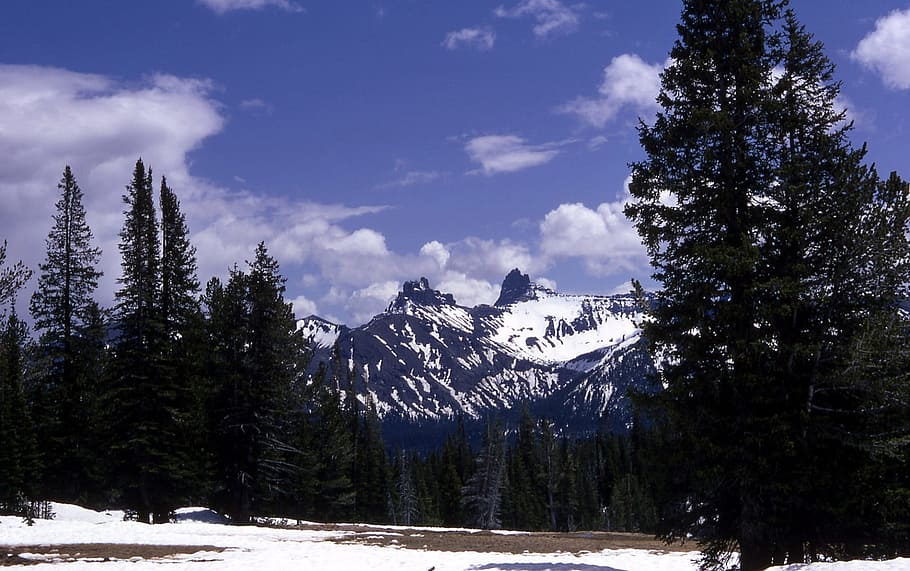
8. Yellowstone National Park, Montana: trippy geologic features and wildlife viewing
North America’s most geologically captivating national park is just as famous for its up-close-and-personal encounters with wildlife and insane summer crowds. Thus, winter is the perfect time to visit for experiencing the perks in solitude. Snowshoe access is spread amongst different sectors of the park: the Observation Loop that provides clear views of Old Faithful/Upper Geyser Basin and Firehole River basin, and the Pebble Creek Ski Trail, a strenuous, 13-mile round-trip backcountry track offering amazing vantage points. The beauty of Yellowstone, however, is there’s nary a bad view.
Tip: Most of the park’s roads are closed to vehicles in winter but there’s a snow coach that provides limited transport.
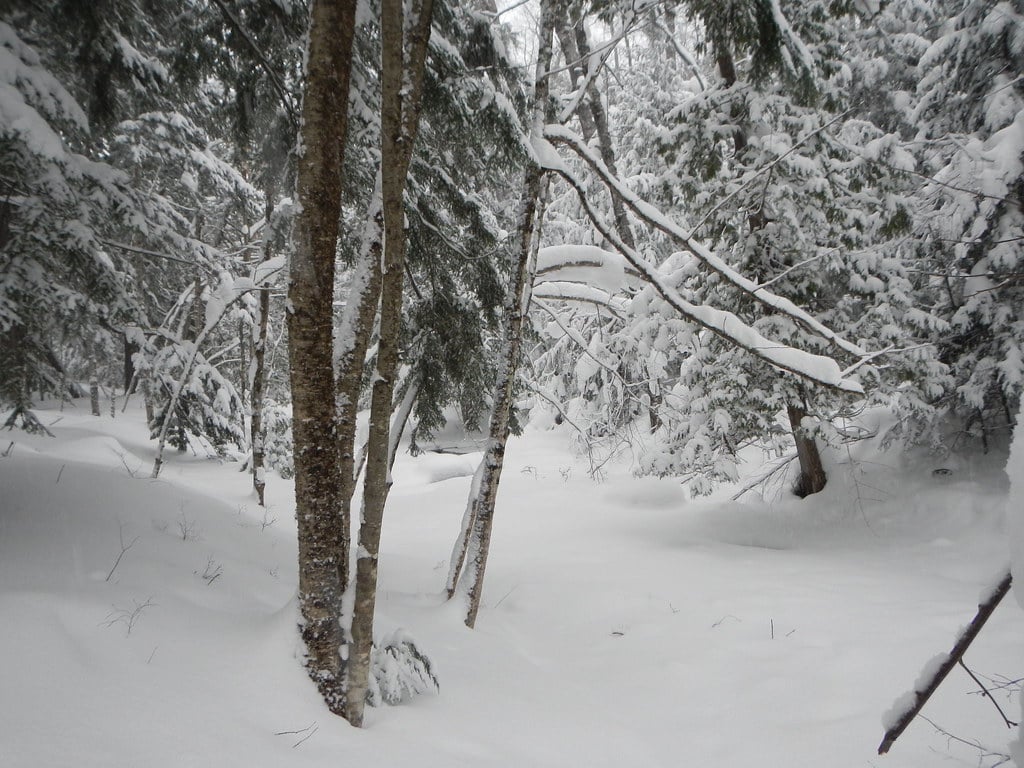
9. Porcupine Mountains Wilderness State Park, Michigan: Blissful solitude and a remote, 100-mile hut-to-hut trail
While “mountains” may be misleading, this remote, 60,000-acre wilderness comprised of old-growth forest, rivers, waterfalls and abundant wildlife on the Upper Peninsula is worth the hassle of getting there. The “Porkies” are also home to a 100-mile hut-to-hut trail (which includes three yurts), all equipped with wood-heated stoves and bunk beds. There are also backcountry sites but this region gets over 200 inches of snow per year and can get brutally cold. While only four of the off-grid cabins are open in winter—Gitchee Gumi, White-tail, Union River and Crosscut—there are 90 miles of trails, some with access to the Lake Superior shoreline, and you can spend all day snowshoeing without seeing another soul. Novices can take a guided tour or trek within Porcupine Mountains Ski Area, which has groomed Nordic trails.
Tip: Only the eastern corner of the park is open in winter, so plan your itinerary accordingly.
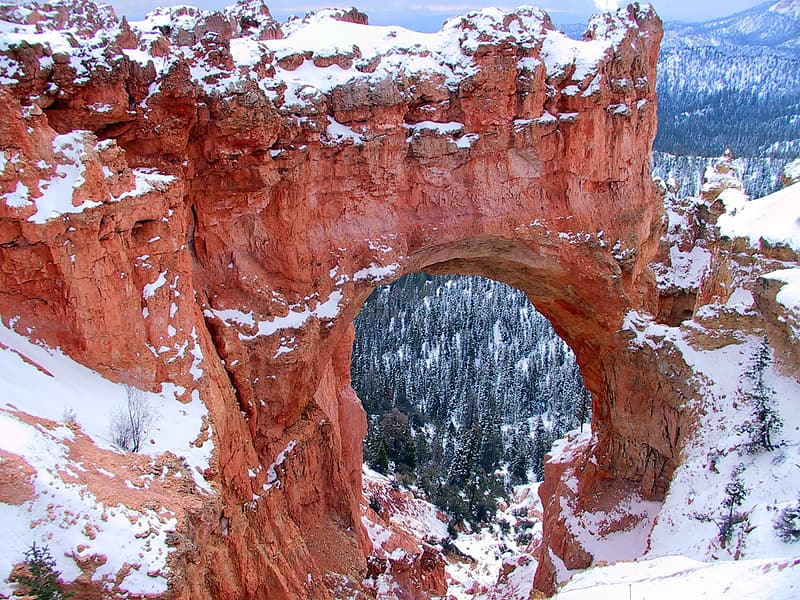
10. Bryce Canyon, Utah: Full moon snowshoes and hoodoos
Do yourself a favor and spend at least a couple of days exploring the park, which has spectacular winter light and two open campgrounds (Sunset and North); if you’re looking for cozier or more family-friendly accommodations, there are plenty of options in Bryce Canyon City. Wintertime means ranger-led full moon and nighttime snowshoes treks (the night skies are spectacular) but if you’re experienced, venture out on your own amongst the hoodoos and twisting canyons. Snowshoeing is allowed throughout the park.
Tip: Note that some roads are closed in winter and always check the weather report before venturing out; this region has mercurial weather and is subject to rockfalls.
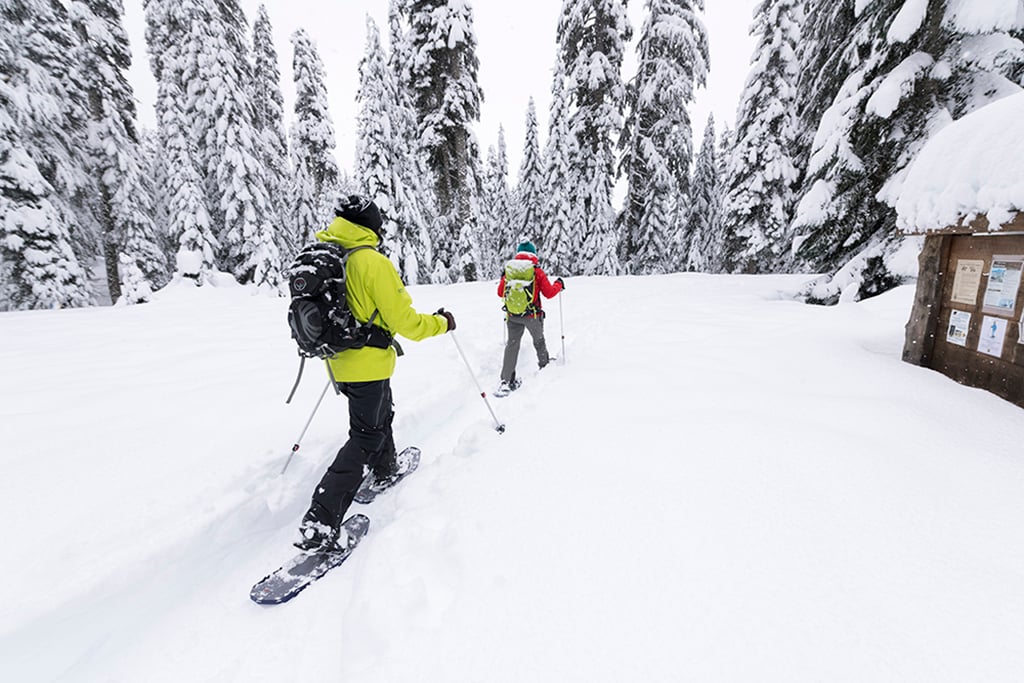
Your Snowshoeing Gear Checklist
Besides the obvious (boots and snowshoes) it’s critical that you have poles, an excellent layering system, basic emergency gear, food, water and more, here’s a detailed checklist.
The MSR Evo™ Ascent Snowshoe Kit has everything you need: the namesake snowshoes with all-terrain traction and Televator heel lifts, DynaLock™ poles and a carry/storage daypack.
Be Avalanche-Aware
If you’re new to snowsports, it’s imperative you take an avalanche safety class or at least understand some basic principles on how to stay safe. If you’re planning to snowshoe in the backcountry, be sure you’re outfitted with the appropriate safety gear.
Read on:
- How to Choose the Right Snowshoes
- How to Get Kids Excited for Snowshoeing
- 9 Trail Snacks for Winter Hiking
- A Beginners Guide to Avalanche Safety
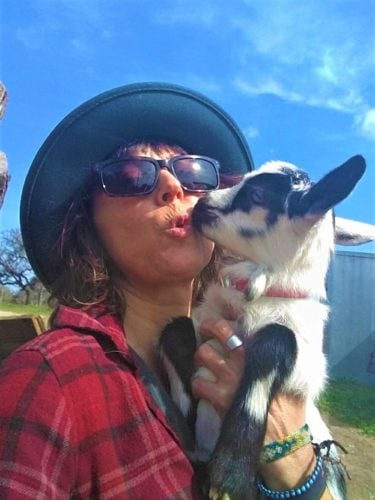 Laurel Miller is an Austin-based food, spirits and travel writer and editor. Despite her Texas locale, she’s obsessed with the mountains and whitewater, but breakfast tacos run a close third. She’s at sustainablekitchen.com.
Laurel Miller is an Austin-based food, spirits and travel writer and editor. Despite her Texas locale, she’s obsessed with the mountains and whitewater, but breakfast tacos run a close third. She’s at sustainablekitchen.com.
Updated. Originally published November 17, 2020.

